Movement can be captured photographically with two approaches:
- Etienne Jules Marey (1830-1904): Studied animal and human movement through the use of chronophotography that was the capturing of a sequence of images using specially designed cameras. The work of Marey in France and Muybridge in England and the USA laid the foundations for moving pictures.
Picturing Time: The Work of Etienne-Jules Marey (1830-1904)
Marta Braun | 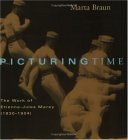 |
|
| |
Etienne-Jules Marey: Chronophotographe
Michel Frizot | 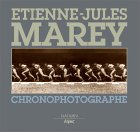 |
|
|
Lettres d'Etienne-Jules Marey a Georges Demeny 1880-1894
Lefebvre |  |
|
| |
Etienne-Jules Marey
Etienne-Jules Marey |  |
|
|
- Eadweard Muybridge (1867-1904): Not only a landscape photographer of considerable merit but a first rate scientist who as a contemporary of Etienne Jules Marey was a pioneer of capturing the motion of animals and humans. His books Animals in Motion and The Human Figure in Motion have been reprinted numerous times and remain classics for artists and scientists.
| Eadweard Muybridge (1830-1904) |
Eadweard Muybridge had a varied photographic career working taking over 2,000 photographs of the American West between 1868 and 1873 - including crystal clear views of the Yosemite Valley in California but the work he is remembered for are his scientific photographs of motion.
In 1872 the railway tycoon Leland Stanford (1824-1893), the founder of Stanford University, placed a bet on how a horse moved but it had been impossible to establish the point with a horse whilst it was in motion. He hired Muybridge to demonstrate the issue with photographs. To achieve this Muybridge developed special cameras, triggering devices and multiple lenses to capture the entire movement of an animal carrying out a specified task. He went on to produce books that are well known by artists, designers, photographers and scientists as a visual guide to the movements of both man and animals. For the creation of his book "Animal Locomotion" he took over 100,000 photographs. | | [Checklist] | Click on image for details
[Copyright and Fair Use Issues] |
|
Time Stands Still: Muybridge and the Instantaneous Photography Movement
Phillip Prodger; & Tom Gunning | 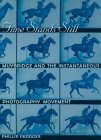 |
|
| |
|
| |
The Human Figure in Motion
Eadweard Muybridge | 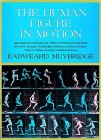 |
|
|
- Thomas Eakins (1844-1916): An American painter who used the techniques of Etienne Jules Marey.
- Ottomar Anschütz (1846-1907) was an inventor as well as a photographer and his slit shutter (patented in 1888) allowed him to take photographs with exposure times of 1/1000th of a second thereby capturing movement with little or no blur. In 1884 his series of storks landing on a nest and taking off were a sensation because of their remarkable precision.
- Arthur Clive Banfield (1875-1965) was a British photographer who studied animal movement and splash formation.
- Anton Giulio Bragaglia (1890-1960) and his brother Arturo Bragaglia (1893-1962) began in 1911 to take photographs against a black background that were intended to capture continuous movement. This was consciously the opposite of the work of Etienne Jules Marey and Eadweard Muybridge and it was an attempt to capture the fluid and continuous dynamic flow of movement - hence the Italian name 'Fotodinamismo' ('photodynamism'). A few years later the brothers came into contact with the Italian Futurist painters (Giacomo Balla, Boccioni and Russolo) who were experimenting with how to represent movement in painting at the same time. Anton Giulio Bragaglia published Fotodinamismo Futurista in 1913 and it was a plea to capturing the dynamism of movement rather than a single moment - whilst a fascinating argument it was difficult to capture in a painting that requires form. [Having said that have a look at Giacomo Balla's 1912 painting Dynamism of a Dog on a Leash (also called Leash in Motion) now at the Albright-Knox Art Gallery, Buffalo, USA to see the same concept expertly carried out.]
| Anton Giulio Bragaglia (1890-1960) |
|
- Frank B. Gilbreth (1868-1924) and the remarkable Lillian Gilbreth (1878-1972) used time lapse photography to study the efficiency of human activities - they were fascinated to examine how motions could be improved to reduce the time required and to this end developed the study of 'micromotion'.
- Gjon Mili (1904-1984) was a specialist in capturing movement on film - his recreation of Marcel Duchamp's painting 'Nude Descending a Staircase' (1942) is quite extraordinary.
- Harold Edgerton (1903-1990): A pioneer of so many scientific uses of photography from stroboscopes, high speed flash in the 1930's capable of speeds of 1/100,000th of a second, the capturing of a birds wings in flight - these and many more are in his classic book Stopping Time: The Photographs of Harold Edgerton.
| Harold Edgerton (1903-1990) |
The scientific photographs of Harold Edgerton cross the boundaries into popular art because of their virtuosity and ability to clearly show a complex movement in a single shot. Using stroboscopes the entire action or a unique moment is captured on a single photograph. Muybridge captured each movement in a separate photograph, Bragaglia as a blur of motion but Edgerton combines the two with clarity.
The reason why these images are so popular is that they amaze the public with the fact that the movement of a speeding bullet can be captured with such precision.
This tradition is continued by people like Professor Andrew Davidhazy at the Rochester Institute of Technology who has used a wide variety of photographic techniques to enhance scientific understanding. | | [Checklist] | Click on image for details
[Copyright and Fair Use Issues] |
|
Stopping Time: The Photographs of Harold Edgerton
Estelle Gus Kayafas | 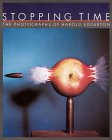 |
|
|

